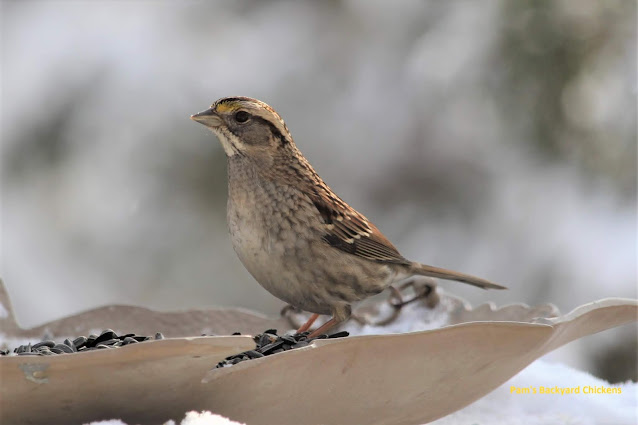 |
| A white-throated sparrow. |
There are two things you need to consider to attract birds as you get started winter bird feeding — food and water. Both can be easily provided although some foods are better for your feathered friends and attract different types of birds.
Pin the image below to save this information for later.
Best 3 Bird Foods for Winter Bird Feeding
Black Oil Sunflower Seed — This is the must-have food for feeding birds! Black oil sunflower seed attracts more birds than any other type of seed. The kernels are high in fat so they provide fuel for cold days. If you don’t like all those messy shells littering the ground around your feeder, there are shell-free options.
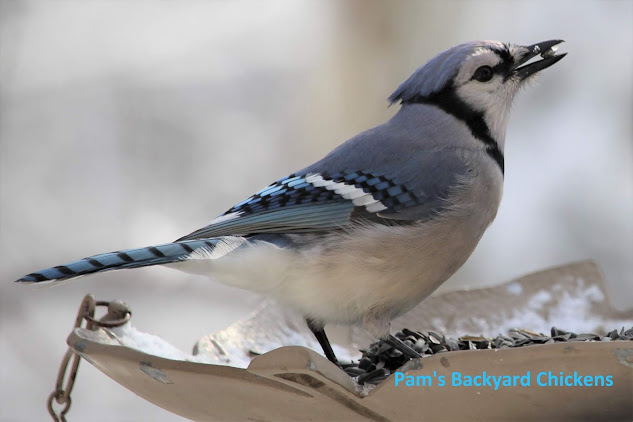 |
| A blue jay with a black oil sunflower seed in its beak. |
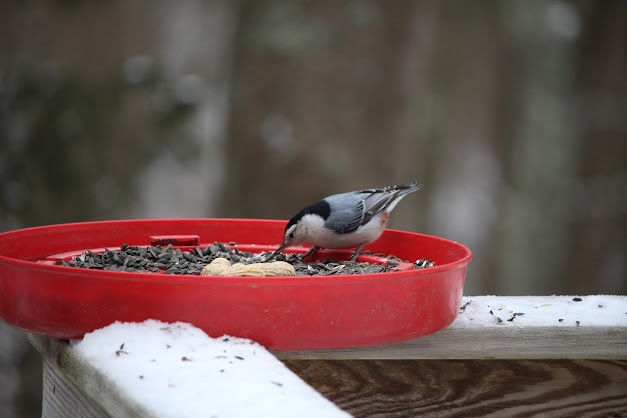 |
| A nuthatch enjoying black oil sunflower seed. |
Suet— Fat equals energy and suet is, by definition, fat. Suet is easily digested and metabolized by birds. You can buy pre-made suet blocks in the store, or you can look in your grocery store meat aisle for suet. It’s inexpensive and easy to prepare. Just grab a metal suet feeder or a bag with mesh holes, like an onion bag, and cut the suet to fit inside. Hang the suet from a branch or metal hook and watch the birds, especially the woodpeckers, come to visit. Raw suet does become rancid in temperatures above freezing. Rancid suet is bad for birds, so only set out as much as the birds will eat in a day or two. If temperatures increase, remove the suet.
Niger (Nyjer)/Thistle Seed — If you want to attract finches, this is the ticket. Niger has a high oil and protein content making it a great source of warmth. You can buy a thistle sock already filled and then hang it out for your birds and refill as needed. The only caution with Niger seed is that it does have a tendency to mold and go rancid. Check your thistle feeder often for signs of a problem. If your birds aren’t visiting your feeder, then get rid of your Niger and replace with fresh seed.
Tip: After Christmas, don't get rid of your cut tree. Set it out and decorate it for the birds.
Winter Bird Food Extras
Seeds and Nuts — As you’re feeding seeds, like squash and pumpkin, and nuts to your backyard birds, remember to make sure they are plain without toppings like salt and sugar. Seeds and nuts can be a great energy source for hungry birds during the winter. You can use feeders specifically for nuts like peanuts or just add them to your normal spread. You can also chop the dried seeds and nuts into pieces. That will help the smaller birds.
Commercial Seed Mixes — Some feed mixes are formulated for the specific types of birds they attract, others are general. A good quality mix is usually more expensive but contains things like shelled sunflower seeds, corn, and millet. Yes, it costs more, but you’ll save money in the long run with less wasted. There are lots of options with commercial seed mixes, so try a few and see what works best for your backyard.
Fruits — You can set out slices of apples, melons, grapes, and oranges for your birds to enjoy.
Mealworms — If you’ve got chickens and poultry and you’re feeding them mealworm treats, why not set some out for your wild feathered friends. They’ll appreciate the protein.
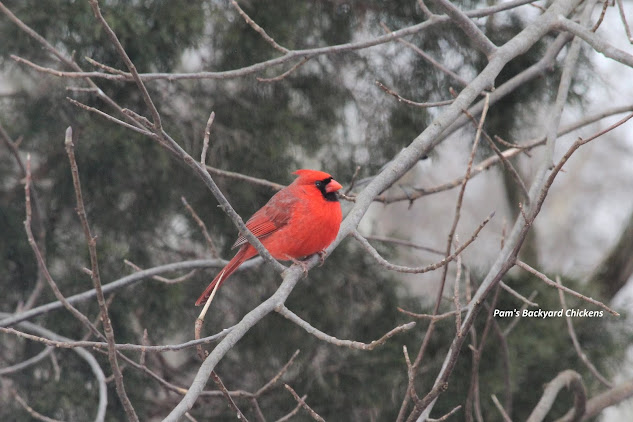 |
| A male cardinal, the State Bird of Ohio, Kentucky and Indiana. |
Providing Water in Winter
Water may be more in winter than at any other time of years since the usual sources aren’t available.
If we don’t give water to the birds, will they survive? Yes. But the gift of water as you are winter bird feeding will be greatly appreciated. Birds can eat bits of ice and snow, but it takes a lot of energy. If water is near your feeders, they can conserve energy.
- In cold climates where it freezes, you’ll need to add a heat source so the water stays above freezing.
- Keep your birdbath clean. Even in winter, feathers and droppings can get in the water. Replace with fresh water every few days and clean it while you’re replacing.
- Do not use harsh chemicals to clean your birdbath. Simply use a damp rag or scrub brush. If needed, a mild detergent or white vinegar will do the trick.
- Add different depths to your birdbath by adding flat stones around the edge and other areas. Small birds need only about a half-inch of water. The stones also ensure that the birdbath is not too slippery.
- Place your birdbath near your feeders, but not so close that it gets clogged with shells and debris from the feeders.
- Place your birdbath near plantings where birds can seek cover.
Bird Watching Gear
Like any other hobby, sometimes the most fun thing is getting the gear, and bird watching is no different. You can start with whatever price point where you're comfortable. There are two basics you'll need to see the birds better and to identify them.
- Field Guide - The big names in the field guide business are Peterson, Audubon, National Geographic, and Stokes. I've been bird watching since I was a kid and recommend starting with a Peterson Field Guide (that's kind of like the Bible of field guides) and then supplementing with a few others. There are field guides for all of North America and then there are region-specific guides, like Eastern and Western. Start with your regional guide so you're looking at a more narrow list of birds that are actually in your area. Also, know that most birders have a variety of field guides they routinely use for better identification.
- Binoculars - The binocular category is huge and can be daunting. The best advice for picking binoculars is to go to your local retailer and have them guide you through your selection. Hold the binoculars to your eyes and use them in the store. What feels comfortable? What allows you to see best? Those questions are different for every person. My mother and I both shopped for binoculars at the same time with similar budgets and both walked out of the store with different binoculars.
Citizen Science!
Once you get the hang of winter bird feeding and know how to identify the birds you're seeing, it can be fun to participate in citizen science programs. There are lots of options and you’ll be contributing to valuable data that allows scientists to track the health of our native bird populations.
Below are links to a few I've done with my family and kids. They are great fun!
Extra Pictures to Help Identify the Birds
 |
| A male eastern towhee. |






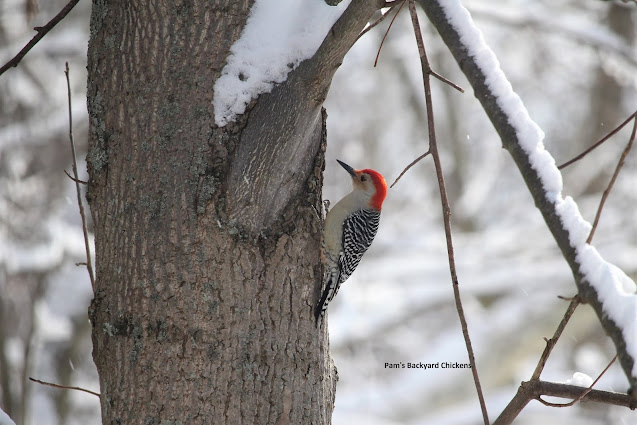
Thanks!
ReplyDelete